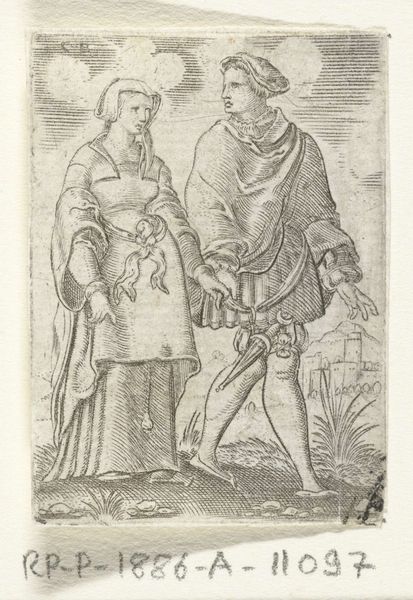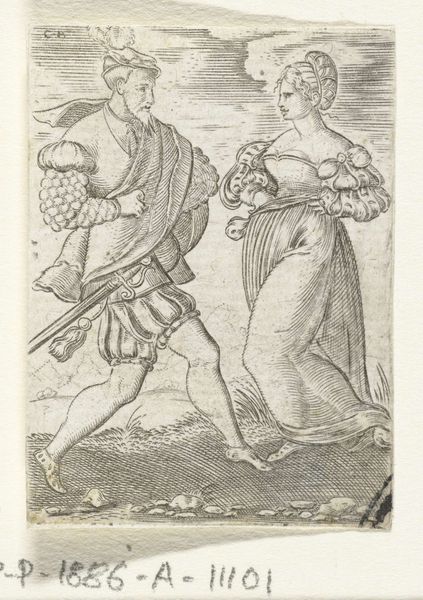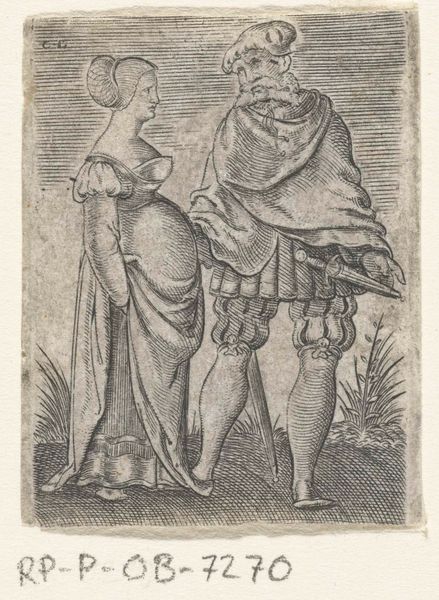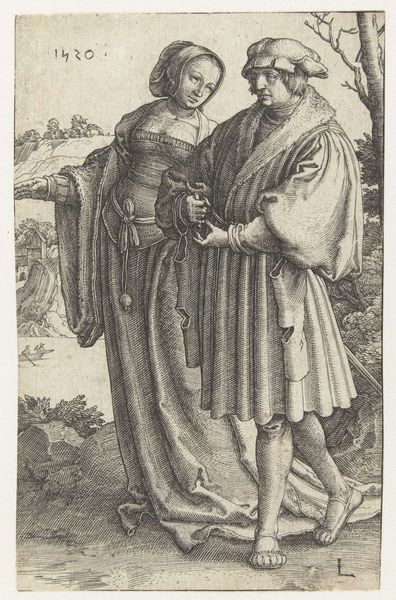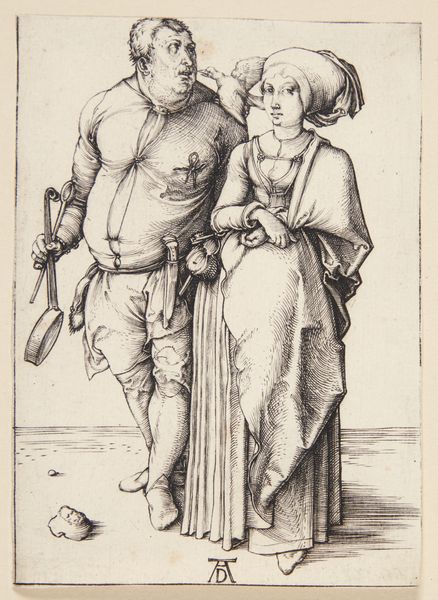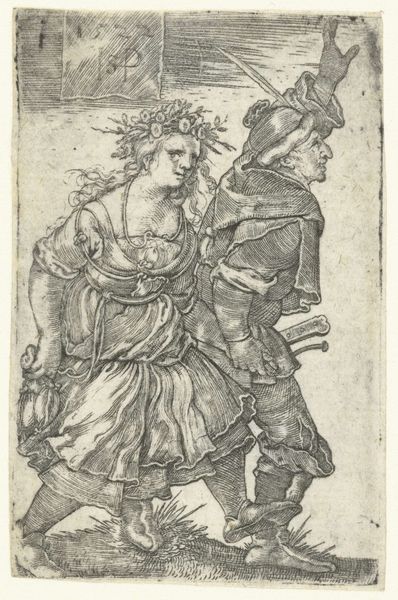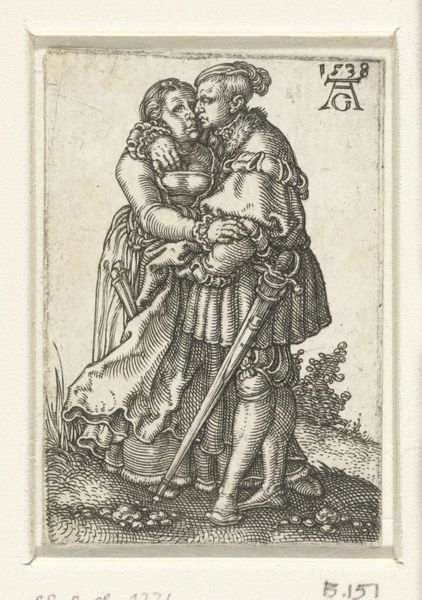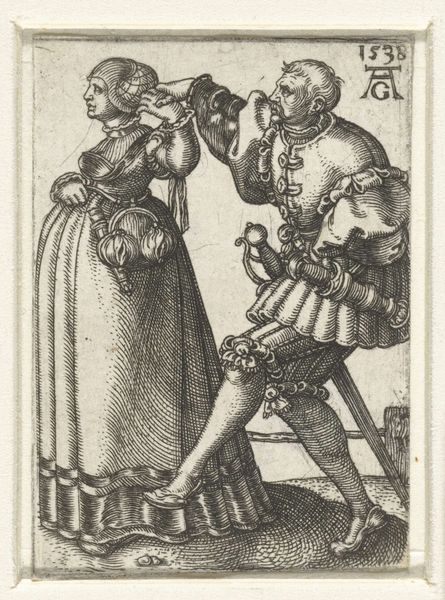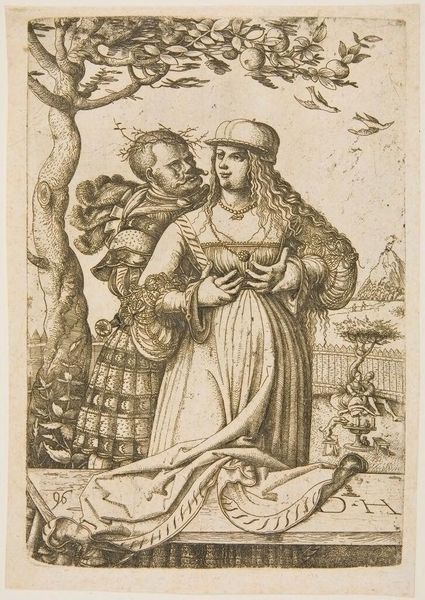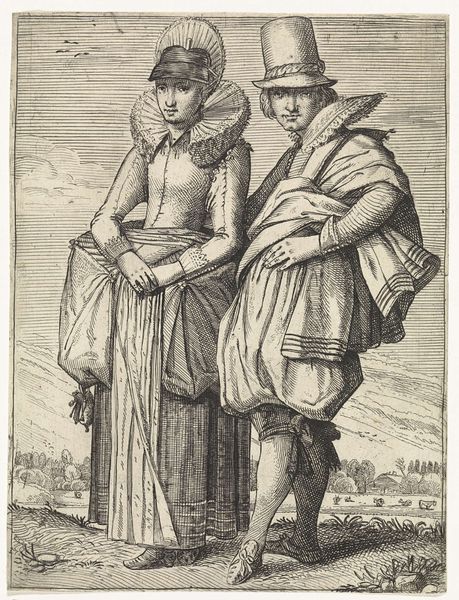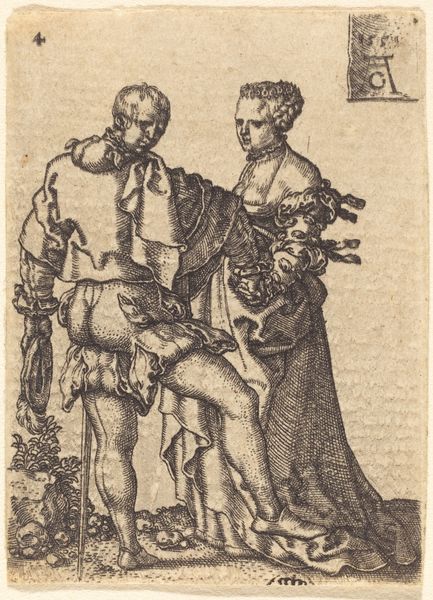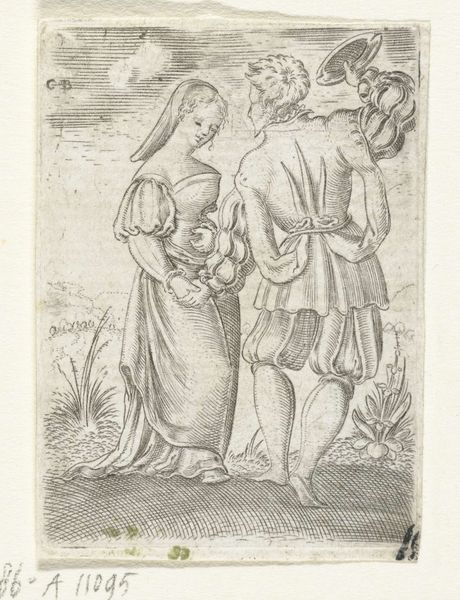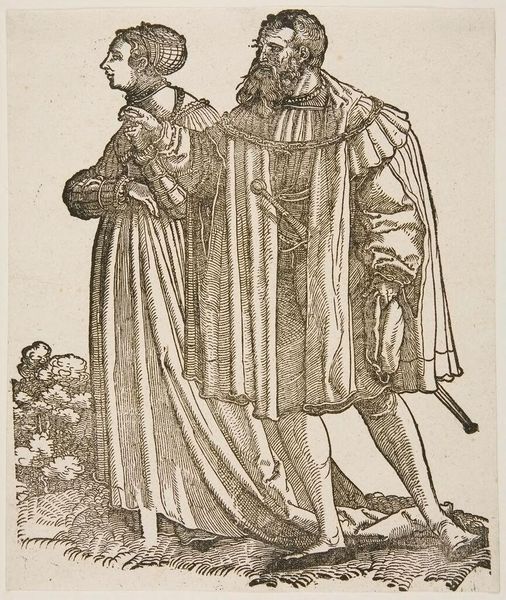
Dansend stel, de man met zijn hand in zijn zij en gekruiste benen c. 1537 - 1555
0:00
0:00
cornelisbos
Rijksmuseum
print, etching
# print
#
pen sketch
#
etching
#
pencil sketch
#
old engraving style
#
mannerism
#
figuration
#
pen-ink sketch
#
pen work
#
pencil work
#
genre-painting
#
history-painting
Dimensions: height 54 mm, width 40 mm
Copyright: Rijks Museum: Open Domain
Curator: This is "Dancing Couple, the man with his hand in his side and crossed legs," an etching by Cornelis Bos, created around 1537-1555. Editor: My initial response is captured by the figures’ somewhat strained interaction; there's an evident formality in the stance of the man and in how their hands barely touch. Curator: Note the detailed craftsmanship of this relatively small print. The artist uses a precise cross-hatching technique that defines forms through contrasting values, and the deliberate lines sculpt the rich textures of their attire. Editor: And how might the conditions in which such etchings were made have influenced these stylistic choices? One wonders about the workshop where Bos worked, about the collaboration between journeymen and master craftsmen. I’m also curious about what kind of paper he used. Curator: Intriguing. From a formalist perspective, though, look at the rhythm established through repetition. See how the curves of the puffed sleeves mirror the folds of her dress, guiding our eye upwards, creating a certain harmony, a structural correspondence, almost like an unspoken conversation between these two characters. Editor: A conversation likely influenced by the contemporary expectations around social rank, of course. We can’t separate this depiction from the cultural significance of attire in the Renaissance and who could afford such exquisitely detailed clothing. These aren't merely compositional choices; they reflect socio-economic realities. Curator: Agreed. Still, if you set aside such associations and view their interaction within the defined, pictorial plane, there's a deliberate use of the blank space too. The artist is forcing us to consider their connection within the framework of the print itself. Editor: Perhaps. But doesn't isolating form from its originating historical conditions—its messy, material construction, the way wealth underwrites representation—flatten the richness and purpose of the piece? Curator: Maybe a bit. But without acknowledging Bos' masterful manipulation of line, one risks losing the structural coherence of the whole, reducing the image to mere document. Editor: Indeed. A middle ground must exist, no? By appreciating how Bos crafted his print and acknowledging that the costuming holds meaning for that specific moment, then, we honor its complexities, both formally and materially. Curator: A reasonable reconciliation. Editor: I am grateful for your perspectives on that note.
Comments
No comments
Be the first to comment and join the conversation on the ultimate creative platform.
